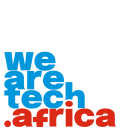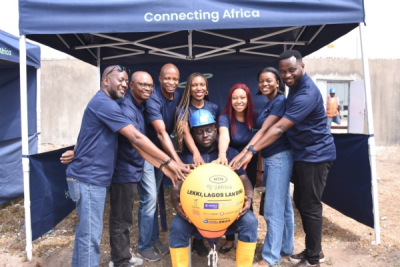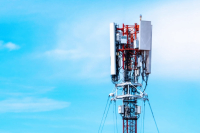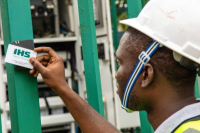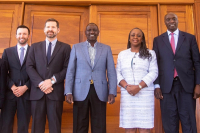
Telecom (150)
Broadband is central to Zimbabwe's development agenda, which is centered around digital transformation. In collaboration with the private sector, the government aims to bolster the national telecommunications infrastructure to ensure affordable Internet access for all citizens.
The Zimbabwean government announced on Thursday, March 7, the commencement of the second phase of the fiber optic rail project. The project, executed by wholesale telecoms infrastructure provider Bandwidth & Cloud Services Group (BCS), aims to enhance connectivity within Zimbabwe’s cities by deploying fiber along national railroads.
This phase will extend fiber optics over 800 km, connecting the village of Somabhula to the capital Harare via the town of Gweru. It will also span the Bulawayo - Plumtree and Harare - Mutare routes. The first phase of the project, initiated in 2022, has already laid 1,180 km of fiber from the border town of Beitbridge in Matabeleland province to the city of Victoria Falls, in the north of the country. The network infrastructure costs $18 million, and the second phase is projected to incur a similar expense.
The project aligns with the government’s strategic goal of transforming Zimbabwe into a self-sufficient and prosperous upper-middle-income society by 2030, leveraging digital technology. It also corresponds with the national broadband program for 2023-2030, which encompasses several state and privately financed infrastructure deployment projects. This program is expected to accelerate broadband penetration in the country and reduce costs.
Ultimately, the fiber optic system will cover the country's entire rail network, from Rutenga to Chikwalakwala, before extending into Zambia and other regions. According to the Honourable Owen Ncube, Minister of State for Provincial Affairs and Decentralization, this project ensures that Zimbabwe will be connected to the rest of the world, marking a positive stride in the “Leave no one behind (LNOB)” principle enshrined in the 2030 Agenda for Sustainable Development and its Sustainable Development Goals (SDGs).
Samira Njoya
Seven months ago, Sonatel acquired the super broadband license for almost $57 million. It aims to revolutionize usage in the local telecoms market and remain the leading operator.
The commercial fixed 5G connectivity offers of Sonatel, 42.33%-owned by Orange, are now available for residential and business customers in Senegal. The telecom company announced in a press release on Tuesday, March 5, that it would soon be expanding its services to include mobile internet offers for ultra-high-speed broadband.
With the advent of 5G, Sonatel promises its customers instantaneous download and streaming speeds, as well as enhanced responsiveness for real-time applications such as online gaming, virtual reality, telemedicine, e-education, among others. The company is inviting customers to explore the “boundless possibilities” of the technology at a dedicated laboratory at the Orange Digital Center in Dakar.
The launch of Sonatel’s commercial 5G comes seven months after the company secured Senegal’s first ultra-broadband license from the local telecom regulator, ARTP, for XOF34.5 billion ($57 million). The telecom firm has been preparing for the deployment of the technology since 2020, confirming its readiness through a successful test in December 2021 and launching its 5G laboratory in July 2022.
In the 5G market, Sonatel leads its main competitors, Expresso Sénégal and Saga Africa Holding Limited (Free), the latter of which obtained its operating license in December 2023 for XOF13.5 billion.
This advantage positions Sonatel to boost its revenues and solidify its leadership in the Senegalese telecom market. As per ARTP data, Orange had 12.5 million mobile telephony subscribers in the third quarter of 2023, accounting for a market share of 56.47%. Expresso and Free held 16.8% and 23.89% of the national mobile subscriber base, respectively. In the internet segment, Orange commanded a market share of 66.52%.
Isaac K. Kassouwi
The strategic partnership was inspired by Tencent's Weixin/WeChat ecosystem and its billion monthly active users.
Orange wants to double the adoption of its Max it super-app by 2025. To this end, the French group decided to sign a partnership with China's Tencent Cloud on Tuesday, February 27 at the Mobile World Congress in Barcelona, Spain.
Orange will leverage "Tencent Cloud's Mobility framework and the Tencent Cloud Mini Program Platform (TCMPP) solution to create an open platform for Max it, enabling the integration of a wide range of mini-apps within its super-app." The aim is to enrich the Max it ecosystem and enhance the customer and partner experience for businesses and people in Africa and the Middle East.
Commenting on the partnership, Jérôme Hénique, CEO of Orange Middle East and Africa, said: "This partnership with Tencent Cloud is a key step in our vision to offer innovative and high value-added services to our users. Enriching Max it with innovative mini-apps is key to strengthening its value proposition, increasing its penetration among Orange and non-Orange customers, and amplifying our social impact."
Max it, launched last November, is a super mobile application that aggregates all the services offered by Orange and its partners. The French company aims to position its super-app in this part of the world as a hub for all mobile services. Deployed in half a dozen countries at launch, it will expand to eight more destinations in the first quarter of this year, before covering all the countries where the group operates before the end of the year.
Adoni Conrad Quenum
African digital financial inclusion remains a challenge. In that context, the new partnership seeks to expand access to financial services.
US Fintech Visa and the GSMA Mobile for Development Foundation (GSMA Foundation) launched the Digital Finance for All (DFA) initiative on Monday during the Mobile World Congress in Barcelona, Spain. This initiative aims to boost digital financial inclusion among 20 million individuals across Africa, Asia, and Latin America by providing targeted educational resources and facilitating access to mobile money services.
The DFA program seeks to equip women, small-scale farmers, and entrepreneurs running nano-, micro-, or small-sized enterprises with essential financial knowledge via technological tools. By doing so, it hopes to enable these groups to leverage mobile money platforms effectively within their respective nations.
"At Visa, we believe that digital payments are critical to including everyone in the digital economy by helping provide access to economic livelihood. Together with the GSMA Foundation, we seek to empower those in underserved communities across the world and provide equal access to help build better financial futures for all," said Chiagozie Nwabuebo, Vice President of Global Growth and Social Impact at Visa.
Despite progress over the past decade, Africa's bank account penetration remains low globally. As a result, many African citizens have increasingly relied on mobile money as a viable alternative form of payment. With the expansion of fintech companies throughout the region, mobile money has become an integral aspect of daily life in Africa.
As per the GSMA's "State of the Industry Report on Mobile Money 2023," the number of active mobile money accounts in Africa rose by 17%, reaching approximately 763 million, while total transactions approached $832 billion - an increase of 22% from 2021. Although growth rates were lower in Latin America and Asia compared to Africa, these markets have also seen significant increases in mobile money usage.
As stated by Ashley Olson Onyango (photo, left), Head of Financial Inclusion and Agri-Tech at the GSMA, “Mobile money can play a transformative role in advancing financial inclusion and resilience for the nearly 2 billion people who remain unbanked globally. However, poor digital and financial literacy is a key barrier to accessing digital financial services, especially for certain population segments like women, farmers, and micro-merchants.”
Adoni Conrad Quenum
Africa's digital landscape is undergoing a rapid transformation, fueled by a surge in mobile phone adoption. By 2022, the Sub-Saharan region was boasting 489 million unique mobile subscribers, translating to a 43% penetration rate.
Ghanaian President Nana Akufo-Addo urged African Union (AU) members to adopt a continent-wide mobile interoperability system, arguing it would boost trade and financial inclusion amid rapid digital transformation.
Speaking at the 37th Ordinary Session of the AU Assembly in Addis Ababa, Akufo-Addo said such a system would accelerate the implementation of the African Continental Free Trade Area (AfCFTA) by facilitating seamless cross-border transactions and potentially eliminating roaming charges.
If implemented, the initiative “can truly and meaningfully fast-track the inclusive realization of the AfCFTA,” he stated.
His push echoes sub-regional efforts toward similar goals. The Southern African Development Community (SADC) is pursuing a single network area (ONA) for a unified digital market, while the East African Community (EAC) and Economic Community of West African States (ECOWAS) are implementing comparable projects.
ECOWAS members Ghana and Côte d'Ivoire already abolished roaming charges within their borders in July 2023, following regulation C/REG.21/12/17. Benin, Togo, Mali, and Burkina Faso are also working towards compliance.
Once implemented, the interoperability of cell phone networks in Africa should facilitate communications between the continent's countries, notably by reducing costs. It is also expected to drive economic integration and empower marginalized communities within the growing digital landscape.
Isaac K. Kassouwi
Following successful landings in Dakar and Accra last November and December, the telecommunications infrastructure embarked on its onward journey across the West African sub-region.
The 2Africa fiber optic submarine cable has landed in Lagos, Nigeria, according to a press release issued on Thursday, February 8 by Bayobab (formerly MTN GlobalConnect), one of the partners investing in the telecoms infrastructure alongside Orange, Meta, and China Mobile International.
2Africa will be the seventh submarine fiber optic system to connect Nigeria, which already draws part of its high-speed connectivity from Google's Equiano cables, SAT3, MainOne, Glo1, Africa Coast to Europe (ACE), and West Africa Cable System (WACS). This new asset represents the private sector's contribution to the project to improve broadband access initiated by the government in 2020. The aim is to cover 90% of the national territory by 2025.
The digital economy is expanding worldwide, but access to broadband connectivity remains a challenge in Africa, where it has the potential to unlock numerous development opportunities. Networks are still largely concentrated in urban areas, hindering the reduction of the digital divide, at the heart of the battle for inclusion that many organizations such as the International Telecommunication Union have been waging for the past 30 years.
In Nigeria, the importance of broadband is well established. The impact the service has had on the country's startup ecosystem over the past ten years is reflected in the dynamism of its tech entrepreneurs, whose solutions meet real, practical local needs. Today, Nigeria is one of the startup ecosystems that attracts the most foreign investment in Africa.
Adoni Conrad Quenum
African nations are making strides in the space industry, with growing investments and collaborations. The initiatives aim to boost the continent’s capabilities and expertise.
Egyptian satellite operator Nilesat and Qatari firm Es'hailSat said on Wednesday they signed a memorandum of understanding to offer various services across the Middle East and North Africa (MENA) region.
Under the agreement, the companies aim to provide video streaming, connectivity, telecommunications, and digital technologies utilizing their combined satellite fleets.
"This partnership represents a significant development for the region's satellite industry," said Nilesat CEO Sameh Katta. "By combining expertise and resources, we are well-positioned to meet evolving customer needs and contribute to economic growth."
The deal comes amid increasing interest in space activities across Africa. A 2023 report by Space in Africa, a Nigerian consultancy, found African nations allocated $425 million to space programs in 2023, with Egypt leading the continent.
Last week, Egypt's space agency launched its experimental NExSat-1 satellite and plans further launches in 2024, aiming to become a regional leader in the space industry.
Adoni Conrad Quenum
In a bid to digitize the nation and boost employment, the South African government is planning a countrywide broadband deployment as part of its digital transformation strategy. The move aims to empower citizens to fully leverage digitized services.
South Africa has extended the deadline for shutting down its 2G and 3G networks by two years, prioritizing faster 4G and 5G technologies instead.
Previously set for June 2024 and March 2025 respectively, the complete deactivation of both networks will now occur on December 31, 2027. The shutdown process will begin on June 1, 2025, with mobile operators having discretion over which network to switch off first.
"This deadline is meant to allow mobile network operators some level of discretion and for them to decide which network to switch off first. Some operators have indicated that they will commence with the shutdown of 3G in June 2024 in support of the policy," said the Department of Communications and Digital Technologies.
This decision aligns with the government's draft policy on "next-generation radio frequency spectrum" licensing, launched in September 2022. The policy aims to reallocate existing radio frequencies from older technologies like 2G and 3G to more advanced 4G and 5G networks. This will free up the spectrum for faster mobile internet speeds and wider network coverage across the country.
The transition to newer technologies also seeks to attract investment in telecommunications infrastructure. This is expected to lead to significant improvements in network quality and reliability, benefiting both businesses and individuals.
Furthermore, the widespread adoption of 4G and 5G networks paves the way for innovation in mobile-based services and applications. This could lead to the development of new industries, businesses, and job opportunities, potentially impacting the South African economy positively.
Samira Njoya
Africa's broadband demand has exploded since 2019, presenting a goldmine for service providers and attracting a wave of financial investment in network expansion.
IHS Nigeria, a major owner and operator of telecom infrastructure, announced on Wednesday the completion of a 10,000-kilometer fiber optic cable network spanning all 36 Nigerian states and the Federal Capital Territory.
The project, executed by IHS subsidiary Global Independent Connect Limited (GICL), aims to address connectivity gaps and support the government's National Broadband Plan, which targets 90% penetration by 2025.
"Limited fiber optic networks hinder service improvement and emerging technologies," said GICL Vice President Kazeem Oladepo. "Our open-access approach provides robust, scalable fiber for multiple operators."
Beyond the fiber network, GICL also brought mobile coverage to over 580 previously unconnected rural communities. Oladepo credited collaboration with stakeholders for the "significant volume" of fiber laid in under three years.
This investment aligns with IHS's strategic focus on high-growth markets like Nigeria. The company sees strong revenue potential, bolstered by the government's commitment to broadband development.
"Supporting wider coverage makes IHS's services indispensable for public and private sectors," Oladepo added, highlighting competition from Pan African Towers, INT Towers, and ATC Nigeria.
In line with his ambition to establish Kenya as a digital hub in Africa, the Kenyan President traveled to Silicon Valley last November. He engaged in discussions with several U.S. technology leaders, encouraging them to invest in his country.
US technology giant Oracle is set to construct its second African data center in Nairobi, Kenya. The announcement was made on January 31, during a meeting held by President William Ruto with a delegation from Oracle, led by Scott Twaddle, the Senior Vice President in charge of products and industries at Oracle Cloud Infrastructure (OCI).
The initiative aims to accelerate the digital transformation of Kenya's government, public institutions, businesses, and startups. "We are delighted to see Oracle planning such an important investment in Kenya. [...] I am excited to see major technology companies like Oracle investing in Kenya and bringing state of the art technologies like AI and cloud applications that will benefit Kenyan citizens, especially in creation of jobs," Ruto said.
Data centers, the physical powerhouses behind the digital world, are experiencing a surge in growth across Africa. These facilities, which store, manage, and distribute essential data, offer the computing muscle needed for online services, applications, websites, and more. This growing demand stems from the continent's rapid digital transformation, with businesses and governments increasingly relying on cloud-based solutions.
While Africa currently houses less than 2%- According to the International Telecommunications Union– of the world's data centers, major players like Microsoft, Amazon, Oracle, and Huawei are taking notice, investing heavily in building new facilities across the continent. This expansion is driven by the need to address the existing gap in cloud infrastructure and capitalize on the region's immense potential for digital growth.
Adoni Conrad Quenum
More...
With the ongoing digital transformation push across Africa, connectivity investments are surging continentwide. The aim is to close the digital gap and cater to all societal levels.
Algeria’s Minister of Post and Telecommunications, Karim Bibi Triki, announced on Monday, a substantial rise in the country’s international bandwidth capacity to 9.8 Tbit/s. This marks a significant increase from 7.8 Tbit/s in 2022, 2.8 Tbit/s in 2021, and 1.5 Tbit/s at the start of 2020.
According to the Ministry, the enhancement aims to provide increased flexibility, emphasizing the strategic role of international bandwidth in ensuring and maintaining Internet services.
The initiative is part of a broader strategy to augment Algeria’s international bandwidth capacity, coinciding with the deployment of a telecommunications infrastructure modernization and development program. The primary objective is to anticipate the escalating Internet demand and ensure ultra-high-speed access.
As per the “Digital 2023” report by international consultancy Datareportal, the median mobile Internet connection speed in Algeria via cellular networks reached 13.40 Mbps, marking an over 17% increase in the 12 months leading up to the start of 2023. Fixed-line Internet speeds reached 11.01 Mbps, rising by 1.23 Mbps compared to 2022.
The bandwidth expansion to 9.8 Tbit/s will facilitate the adoption of new technologies such as 5G, the Internet of Things (IoT), and other emerging services. It will also bolster network resilience, catering to the growing demand for services that require rapid data transmission, including video streaming, online gaming, and other bandwidth-intensive applications.
Samira Njoya
Africa's digital economy is projected to surge to $712 billion by 2050, representing a hefty 8.5% of the continent's gross domestic product. This robust growth is fueling digital transformation strategies across African nations, with Côte d'Ivoire emerging as a frontrunner in spearheading the digital shift.
Côte d’Ivoire plans to activate 5,207 kilometers of fiber optic cable in the coming months, part of a total 7,000 km to be deployed nationwide by 2025, according to Ibrahim Kalil Konaté, Minister of Digital Transition and Digitization. The announcement was made during a New Year’s greeting ceremony at his ministry on January 26.
The project, initiated in 2012, aims to provide high-speed internet access, crucial for the broad adoption of dematerialized services, and to bridge the digital divide by creating new socio-economic opportunities. The government has partnered with Axians to construct 1,920 km of the fiber optic cable, in collaboration with the National Agency for Universal Telecommunication Services, a public agency under the Ministry of Telecommunications. Sagemcom and Bouygues Energies & Services are also key contributors to the project.
In addition to the fiber optic rollout, the country plans to implement other digital initiatives this year, including the enforcement of a new startup law passed in 2023 and an increase in 4G coverage from 63% to 90%.
These actions form part of the national digital development strategy through 2025, adopted by the Council of Ministers on December 22, 2021. Minister Konaté is optimistic about the potential impact of digital transformation on the Ivorian economy, predicting it could boost the gross domestic product (GDP) by 6 to 7 points and mobilize between XOF2,000 billion ($3.3 billion) and XOF3,500 billion.
Samira Njoya
With the advent of high-speed internet, online gaming has seen global growth. In Africa, a surge in the market is evident, propelled by the young generation's enthusiasm for innovation and technology.
Fourteen African nations are vying for eFootball glory at the special edition of the Orange eSport Experience in Abidjan, Côte d'Ivoire, coinciding with the 2023 African Cup of Nations (AFCON).
The event, which ran from January 19 to 20, showcases the continent's rising eSports talent, with teams from Côte d'Ivoire, Cameroon, Guinea, Madagascar, Mali, Morocco, Democratic Republic of Congo, Senegal, Central African Republic, Sierra Leone, Benin, Ghana, Gabon, and Togo battling for the African champion title.
"The Orange eSport Experience is more than just a competition," said Brelotte Ba, Executive Vice President Orange Africa and Middle East. "It embodies our commitment to eSports in Africa and fostering opportunities for young talent. This special eFootball 2024 edition alongside AFCON 2023 underlines our long-term vision, where eSports becomes a driver of innovation, job creation, and outreach for African youth."
Orange's Long-Term Vision for African eSports
Since 2016, Orange Group has been a driving force in Africa's eSports landscape, organizing national and international competitions to unearth and nurture young talent. The company aims to equip young gamers with the skills needed to thrive in this evolving field, contributing to the overall development of the continent's eSports ecosystem.
Video gaming has transcended its entertainment roots, now offering career opportunities in fields like cybersecurity, artificial intelligence, and Open Innovation. The global eSports market exceeds $1 billion today, highlighting its immense potential.
Orange eSport Experience: A Platform for Talent and Innovation
Launched in 2018, the "Orange eSport Experience" has already seen four pan-African finals, showcasing the continent's burgeoning eSports talent.
"The Orange eSport Experience is where gaming passion meets sportsmanship, creating a captivating spectacle for players and fans alike," said Mamadou Bamba, CEO of Orange Côte d'Ivoire. "Our commitment to eSports extends beyond the event. By supporting this sector, we invest in the aspirations of African youth, stimulating creativity, inclusion, and the emergence of new talent."
Mobile money, alongside data, is propelling growth for African telecoms companies, but winning over new users with innovative offerings is the next big challenge.
Orange Madagascar is shaking up its mobile money service, Orange Money, with two innovations aimed at boosting accessibility and subscriber numbers.
The first move allows anyone, regardless of their mobile network provider, to open an Orange Money account via the "Orange Money Africa" app. This removes the previous barrier of needing an Orange SIM card.
Secondly, customers can now self-register for an account directly within the app, eliminating the need for in-person visits or paperwork. By entering personal information, uploading ID documents, and taking a photo, users can activate their accounts in real-time.
According to Frederic Debord, CEO of Orange Madagascar, the new process empowers customers and saves them time so they no longer have to wait in lines or fill out forms.
The simplified process grants immediate access to core Orange Money services, including cash deposits and withdrawals, low-cost money transfers, online and in-store payments, bill payments, and salary or international transfer receipts.
Orange Madagascar hopes these changes will attract new users, boost transaction volume, and ultimately, increase revenue. However, for access to the full range of services, enhanced security checks will be required.
